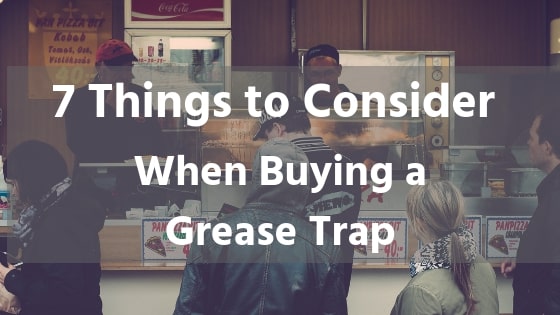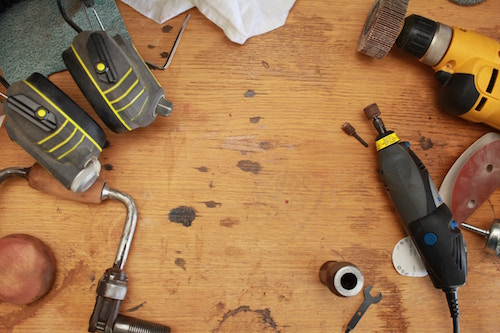
If you run a commercial food establishment, you certainly know that a grease trap is necessary.
A grease trap helps to reduce fats, oils, and grease (FOGs) from entering drains and the sewerage system. In addition, it helps protect a building’s interior and exterior plumbing devices.
That said, not all grease traps are created equal. That’s why it can be confusing when you’re first looking into buying a grease trap. This is because there are various things you must consider first.
For example, you need to consider, among other things, your capacity needs, location and space constraints, durability, and availability of parts.
To make the process of buying a grease trap a bit easier we’ve made you a list.
7 Things That You Need to Consider When Buying a Grease Trap
1. Grease Trap Capacity/Grease Trap Sizing
This is called grease trap “sizing.” You need to know how much grease your kitchen is discharging so that you know how much grease trap capacity you need.
Needless to say, the more your kitchen is discharging, the bigger the trap you’ll need and vice versa. If you buy one that is too big, that would be money down the drain. If you get one that’s too small, it may require a more frequent cleaning schedule and even risk being out of code compliance.
To calculate your grease trap capacity, calculate your potential grease discharge. You can do this by calculating the size of your kitchen sink and other appliances that empty into them.
Other factors to consider include the number of meals served and your menu options (such as bacon cheeseburgers compared to steamed vegetables).
2. Code Compliance
You must ensure that your grease trap is code compliant. If your grease trap is found to be noncompliant, you may face a civil penalty.
Food establishments need to adhere to certain regulations. These include the local plumbing and building codes, and state and federal laws as well.
Unfortunately, these requirements can add up for commercial kitchens.

3. Space Limitations
You should also consider space when thinking of buying a grease trap. In the past, most food establishments had adequate space for large concrete grease traps just outside their buildings.
Today, getting enough space is a challenge. Even when you do, it’s often priced at a premium, especially in big cities.
Depending on several factors, you may consider putting your grease trap in between floors or in a basement. However, not all grease traps allow this kind of mounting. As such, you may need to do your research first.
4. Durability
As a savvy business person, you obviously want to invest in a durable grease trap. You wouldn’t want to shop for a grease trap every now and then.
It used to be, that most restaurants had concrete grease traps. Concrete doesn’t do quite well when it comes to withstanding the kitchen’s waste discharge. But, times have now changed.
These days, most grease traps are designed with durability in mind.
5. Availability of Parts
Even with a quality grease trap, chances are, you’ll need a part replacement somewhere down the road. After all, a grease trap is an equipment that has to deal with waste effluent on a daily basis.
Thus, when buying a grease trap, make sure that its parts are easily available. Besides, ask the dealers or manufacturers about if there are parts that will need to be replaced on a predictable schedule and if there is any scheduled maintenance required.
6. Ease of Maintenance
All grease traps must be periodically emptied, and the accumulated waste disposed of. So, ease of maintenance is a major factor to consider when buying a grease trap.
Some commercial kitchens hire an external company to regularly service their grease traps. In some cases, the companies deliver the waste to a biodiesel plant where it is recycled into biodiesel.
Other companies choose to vacuum out the FOG (fats, oils, and grease) and truck it to a landfill.
In other cases, particularly in small food establishments, an employee is hired to do the task of dumping the waste grease into the trash. This also works fine but is not as environmentally sustainable.

7. Cost of Grease Trap Installation
This cost goes beyond just the initial purchase price. Other additional expenses to think about in the long run include the cost of emptying the unit, disposing the waste, and maintaining it.
The cost of installing a grease trap depends on the type of trap that you install. For example, some high-capacity grease traps may need less cleaning. Whereas, if you opt for automatic grease traps, you may find that these are easier to clean and require less maintenance overall.
Clearly, opting for the right grease trap is crucial. So, whether you are buying a new grease trap or replacing your old one, these are the 7 main things that you should consider.




